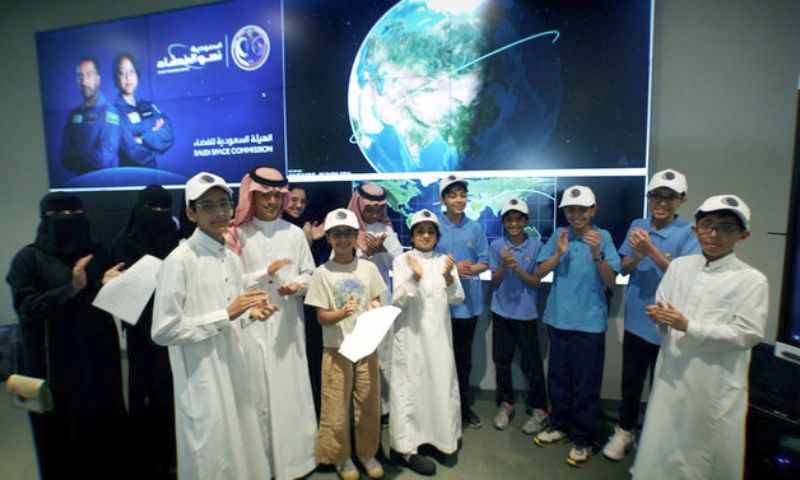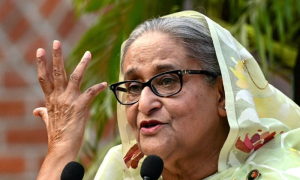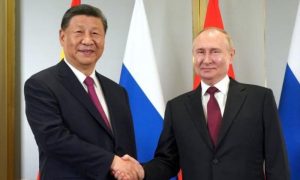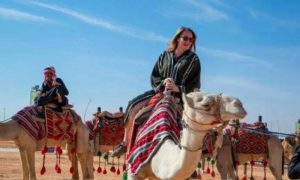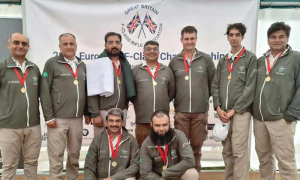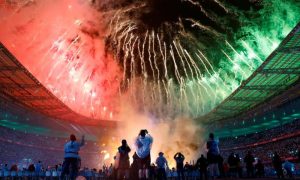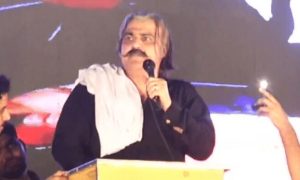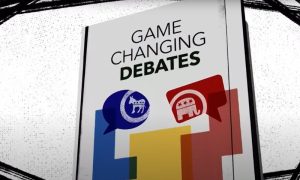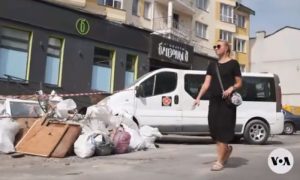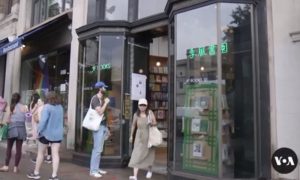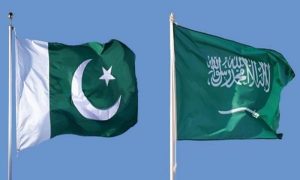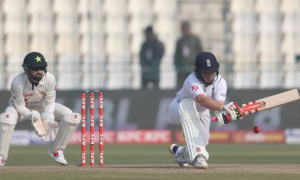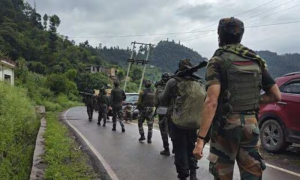RIYADH: Saudi astronauts Rayyanah Barnawi and Ali Al Qarni engaged in a live broadcast from the International Space Station (ISS), where they answered a series of questions posed by inquisitive Saudi youngsters. The astronauts carried out scientific experiments aimed at enhancing scientific awareness among school students across the Kingdom.
In a video clip shared on Twitter by the Saudi Space Commission, a sixth-grade student named Abdullah from Tabuk in the northern region asked the question, “What do astronauts eat while staying on the International Space Station?”
Barnawi responded, “We brought frozen food from the ground. We put water on it, and it is ready to eat after five or ten minutes.” She also displayed models of the food, highlighting the various types available onboard the ISS.
In an exceptional educational event, Barnawi and Al Qarni conducted three real-time educational experiments from the ISS, engaging with 12,000 Saudi students across 42 different locations in the Kingdom. This interactive session was held in collaboration with the Ministry of Education and the King Abdulaziz and his Companions Foundation for Giftedness and Creativity (Mawhiba), with participation from schools in Riyadh and Misk.
Saudi Astronauts Conduct 14 Scientific Experiments
The Saudi astronauts conducted a total of 14 scientific experiments during their mission, covering a wide range of topics, from human research and cell science to artificial rain in microgravity. The objective of the three experiments carried out during the live session was to enhance students’ understanding of space science and its potential for improving the quality of life on Earth. By comparing the terrestrial experiments conducted by the students with the real-time experiments performed by the Saudi crew aboard the ISS, the aim was to demonstrate the impact of the experiment environment on the results.
The focus of the experiments included Liquid Fireworks, Space Kite, and Heat Transfer, which examined fluid mechanics, aerodynamics, and heat transfer, respectively. The students had the unique opportunity to observe how microgravity affected the behavior of fluids and the alteration of aerodynamics in space compared to Earth.
The participating students were divided into three age groups. The first group, aged 9-12, conducted experiments on liquid fireworks to study fluid mechanics. The second group, aged 13-15, built space kites to explore alterations in aerodynamics under microgravity. The third group, aged 15-18, focused on heat transfer to observe changes in color and time under the influence of microgravity, aiming to educate students about the different ways heat is transferred in space.
It is worth noting that the ISS has a radio communication program called Amateur Radio on the International Space Station (ARISS). This program aims to inspire students worldwide to pursue careers in science and develop their scientific passion by providing them with the opportunity to communicate with the ISS crew.









